How AI-Powered Conversations Can Help You Scale Faster and Work Smarter
Voice AI is radically changing the nature of business communication. This powerful technology is enabling automated, human-like interactions that enhance customer engagement, streamline operations, and reduce costs.
One of its most impactful applications is in real-time lead response and qualification, where AI-powered voice agents instantly engage prospects, assess their needs, and route them appropriately - eliminating delays and improving conversion rates.
This article demystifies Voice AI, exploring the evolution, use cases, and key components and costs, providing business owners with a contextual roadmap for adoption.
Whether you're considering AI for customer service, lead generation, or appointment scheduling, this guide simplifies Voice AI, helping you understand its impact and practical applications.
What are Voice AI Agents (Assistants)?
They use technologies such as Automatic Speech Recognition (ASR), Natural Language Processing (NLP), Text-to-Speech (TTS), and often Generative AI or Large Language Models (LLMs) to provide human-like, dynamic, and personalized interactions.
Unlike traditional systems like Interactive Voice Response (IVRs), which rely on rigid scripts, AI Voice Agents can understand intent, respond naturally, and adapt to context in real time.
These agents are used in both inbound and outbound contexts:
- Inbound AI Voice Agents handle customer-initiated interactions like support inquiries, order management, or appointment scheduling.
- Outbound AI Voice Agents proactively engage customers for tasks such as sales outreach, lead qualification, follow-ups, or appointment reminders.
They automate repetitive tasks, improve efficiency, and provide scalability for businesses while maintaining a natural conversational experience.
Where are Voice AI Agents Deployed?
Wherever a customer:
- Can call - inbound assistant;
- Can be called - outbound assistant;
- And some you haven't though of - Power up your website with a voice conversation chatbot.
In our context we are specifically looking at:
- Real-time Inbound and Outbound lead response and qualification.
- Dormant list revival: Engaging with your dormant list of past contacts.
Table of Contents
- What are Voice AI Agents (Assistants)?
- Where are Voice AI Agents Deployed?
- Who is this Article for? | Article Use Case
- In this Article
- Conversation Snippets of Voice AI Agents
- The Voice AI Landscape
- What are the Key Drivers of the Voice AI Landscape?
- A Note on Agentic AI
- What are the Characteristics of Voice AI?
- What are Some Applications of Voice AI?
- 1. Customer Support & Booking Services (Universal Use Case)
- 2. Healthcare & Wellness
- 3. Restaurants & Food Services
- 4. Hair Salons, Spas & Personal Care
- 5. Legal & Financial Services
- 6. Automotive Services
- 7. Real Estate & Property Management
- 8. Travel & Hospitality
- 9. Retail & E-commerce
- 10. Education & Training
- 11. Home & Professional Services
- 12. Entertainment & Events
- How Does Voice AI Work?
- What are the Components and Component Costs of Voice AI?
- Why choosing the right voice matters
- Conclusion
- TL;DR
- Article Resources
- References
Who is this Article for? | Article Use Case
This article is for business owners, entrepreneurs, and decision-makers who want to understand AI voice agents (assistants) without the jargon. If you're curious about how Voice AI can enhance customer interactions, automate lead response, and streamline communication, but don't know where to start, this guide will break it down in simple, practical terms—no technical expertise required. Whether you're considering AI for customer service, sales, or operational efficiency, this article will help you make an informed decision.
Conversation Snippets of Voice AI Agents
To whet your appetite, here are a couple of snippets of actual conversations with two different Voice AI agents.
Outbound Real-Time Lead Response
Inbound Estate Agent (Real Estate) Lead Qualifier and Appointment Setter
The Voice AI Landscape
Here are three projections of market value for the year 2030 compared with 2024.
- Vertical AI Agents: These are agents that serve a specific industry sector such as health of finance.
- Voice AI Agents: What this article is all about. This sector is projected to have the same value as the vertical sector.
- Conversational AI: The familiar ChatGPT, Claude and such. Here augmented and virtual AI will see significant growth
Source: Research done using Perplexity AI.
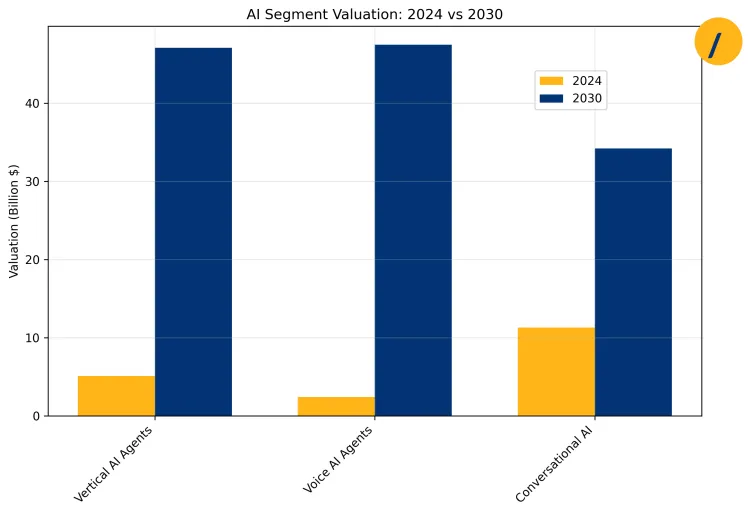
What are the Key Drivers of the Voice AI Landscape
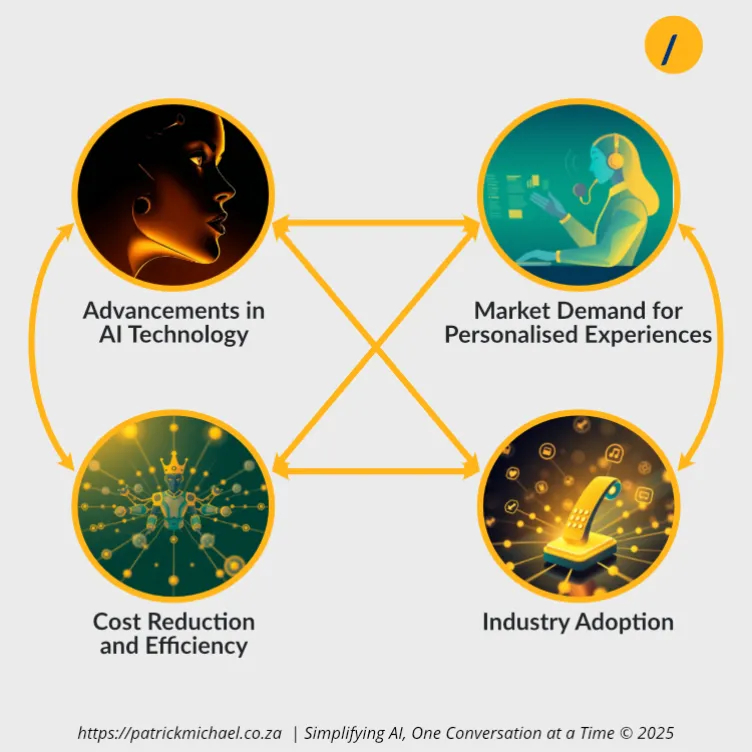
- Advancements in AI Technology
- Deep Learning and NLP: Improvements in natural language processing (NLP) and deep learning have made AI voices more realistic and responsive, enabling human-like interactions.
- Speech Synthesis: Breakthroughs in text-to-speech (TTS) synthesis allow AI voices to emulate human intonations and express emotions, enhancing user experience.
- Cost Reduction and Efficiency
- 24/7 Availability: AI-driven voice interactions reduce labour costs by providing continuous service without human intervention.
- Scalability: AI voice agents can handle thousands of concurrent interactions, making them highly scalable for businesses.
- Market Demand for Personalised Experiences
- Customisation: Businesses seek AI solutions that offer personalised voice interactions to enhance customer satisfaction and brand identity.
- Multilingual Support: Growing demand for multilingual voice generation systems to cater to a global audience.
- Industry Adoption
- Customer Support: AI voice agents automate common support requests, reducing wait times and improving response accuracy.
- Healthcare and Financial Services: AI-driven voice assistants are used for medical information, prescription refills, and financial transactions.
Source: Research done using Perplexity AI.
A Note on Agentic AI
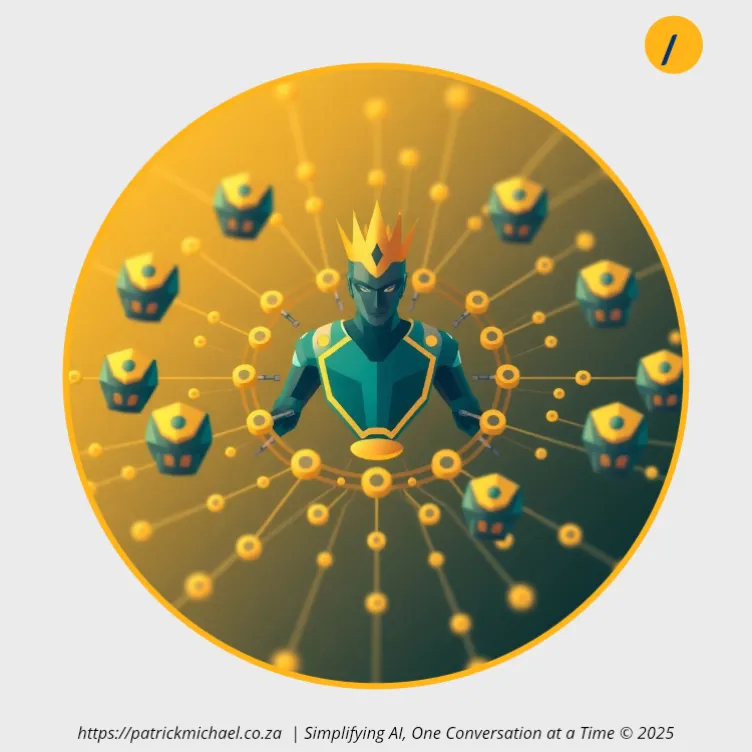
In practical application, what does agentic AI mean?
Basically, all agents are connected and engage with each other depending on the task.
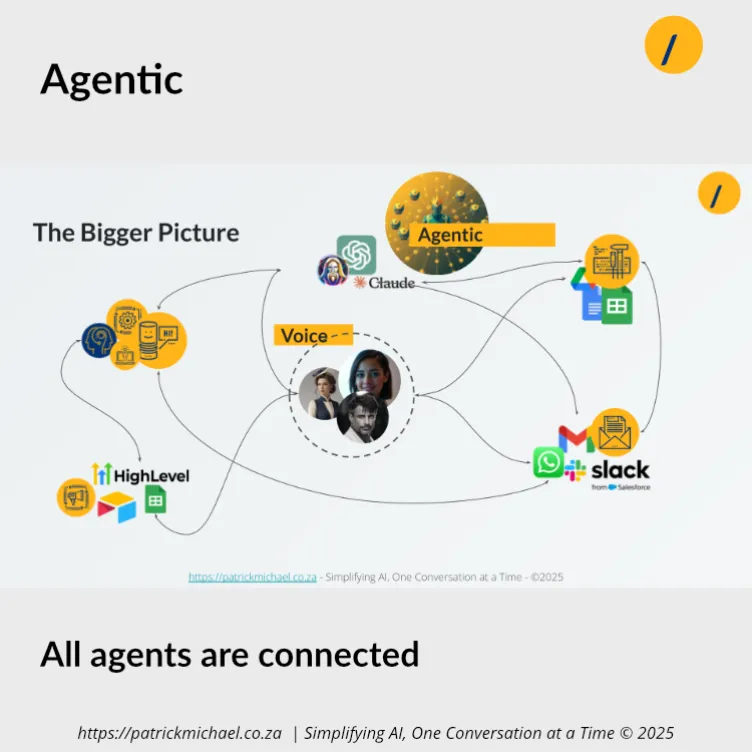
Examples of agentic flow
Note: All the processes are automated. Make.com is a fantastic tool that enables these automations.

- E-mail sentiment analysis (pink):
- An email comes in and sentiment analysis is performed;
- As a matter of course, the CRM is updated;
- If the analysis is one of important, a message is sent to a manager or senior consultant;
- If not, a process could trigger at a later stage, and an outbound call using the outbound AI voice agent is initiated;
- The CRM is updated after all processes.
- Facebook Instant Form Campaign (green):
- A prospect submits the Instant Form linked to a Facebook campaign;
- The form is linked to a real-time inbound Voice AI agent that responds and qualifies the lead;
- The CRM is updated;
- Based on the conversation, the agent could book an appointment with the correct sales rep;
- Or, as above, an external trigger could initiate an outbound call;
- The CRM is updated after all processes.
What are the Characteristics of Voice AI?
Voice AI agents now sound remarkably human-like, but unlike humans, they have no physical or emotional limitations. In other words:
- They do not get sick;
- They do not tire;
- They do not react to abuse or harassment;
- They do not need coffee breaks.
The Importance of Understanding AI Agent Behaviour and Output Evaluation
While voice AI agents may sound human, they are not human.
This is a crucial distinction. Because the agent sounds like a person, we often interact with it as if it were one. It's an automatic, conditioned response.
Why does this matter?
AI agents are non-deterministic by design. They’re predictive and incorporate randomness. This means that an agent will not produce the same output twice. If you input the same prompt into a language model (LLM) multiple times, you'll get similar responses - but they won’t be identical.
Why is this a potential issue?
LLM outputs are often judged based on “feelings” - and these evaluations are subjective, meaning they can change over time.
This is an important consideration when managing expectations and raises a key question: How should we evaluate AI output?
How do we evaluate LLM output?
How can we determine if an LLM output is good, bad, acceptable, or not?
This is where Cosine Similarity Score comes in.
Cosine Similarity Score: measures how similar two vectors (blocks of text, words, or any data) are. A high score (0.9) indicates that the vectors are semantically similar, while a low score (0.1) shows they are not.
What are Some Applications of Voice AI?
Wherever a customer:
- Can call;
- Or be called;
- And some you haven't thought of...
In our context, we are specifically looking at:
- Real-time Inbound and Outbound lead response and qualification.
- Dormant list revival: Engaging with your dormant list of past contacts.

That said, other applications are:
(full disclosure: I used AI to write this section below :-))
1. Customer Support & Booking Services (Universal Use Case)
- Automates appointment scheduling, cancellations, and rescheduling.
- Handles FAQs about services, pricing, and availability.
- Provides after-hours customer support for 24/7 availability.
2. Healthcare & Wellness
- Doctors & Dentists: Automates appointment booking, prescription refills, and patient reminders.
- Mental Health Services: AI chatbots provide guided mindfulness exercises and crisis support.
- Optometrists & Audiologists: Manages vision/hearing test bookings and follow-up reminders.
3. Restaurants & Food Services
- Handles reservations and waitlist management.
- Takes food orders over the phone or via voice-enabled kiosks.
- Sends automated reminders for reservations and takeout orders.
4. Hair Salons, Spas & Personal Care
- Manages appointment bookings and cancellations.
- Sends automated reminders for upcoming visits.
- Recommends personalized services based on customer preferences.
5. Legal & Financial Services
- Law Firms: Answers basic legal questions, schedules consultations, and provides case status updates.
- Accountants & Tax Services: Automates tax deadline reminders and appointment scheduling.
- Insurance Companies: Provides policy details, claims status updates, and premium reminders.
6. Automotive Services
- Car Dealerships: Schedules test drives and service appointments.
- Mechanics & Repair Shops: Handles service bookings and estimates.
- Car Rentals: Assists with bookings, availability, and return instructions.
7. Real Estate & Property Management
- Schedules property viewings and rental appointments.
- Provides details on listings, mortgage rates, and neighbourhood insights.
- Automates tenant support for maintenance requests.
8. Travel & Hospitality
- Hotels: Handles room bookings, check-ins, and service requests.
- Tourism Operators: Provides tour availability, ticket booking, and itinerary updates.
- Airlines: Assists with flight bookings, delays, and baggage tracking.
9. Retail & E-commerce
- Assists customers with product recommendations and availability.
- Handles order tracking and return requests.
- Provides support for loyalty programs and promotions.
10. Education & Training
- Schools & Universities: Manages student inquiries, admissions, and scheduling.
- Corporate Training: Provides interactive learning modules and progress tracking.
- Language Learning: AI tutors assist with pronunciation and conversation practice.
11. Home & Professional Services
- Cleaning Services: Schedules appointments and provides pricing estimates.
- Plumbers, Electricians, & Handymen: Handles service bookings and availability.
- Landscapers & Gardeners: Manages seasonal maintenance reminders and job scheduling.
12. Entertainment & Events
- Event Venues: Handles ticket bookings and provides event details.
- Cinemas & Theatres: Assists with showtimes, seat selection, and bookings.
- Gyms & Fitness Studios: Schedules classes, sends workout reminders, and manages memberships.
Key Takeaway:
Any business that takes appointments, handles customer inquiries, or provides automated reminders can benefit from a Voice AI Agent. The trend is clear: AI is moving beyond big enterprises and becoming an essential tool for small and medium-sized service businesses.
End of AI written content :-)
How Does Voice AI Work?
First, let's look at what a typical inbound voice flow looks like.
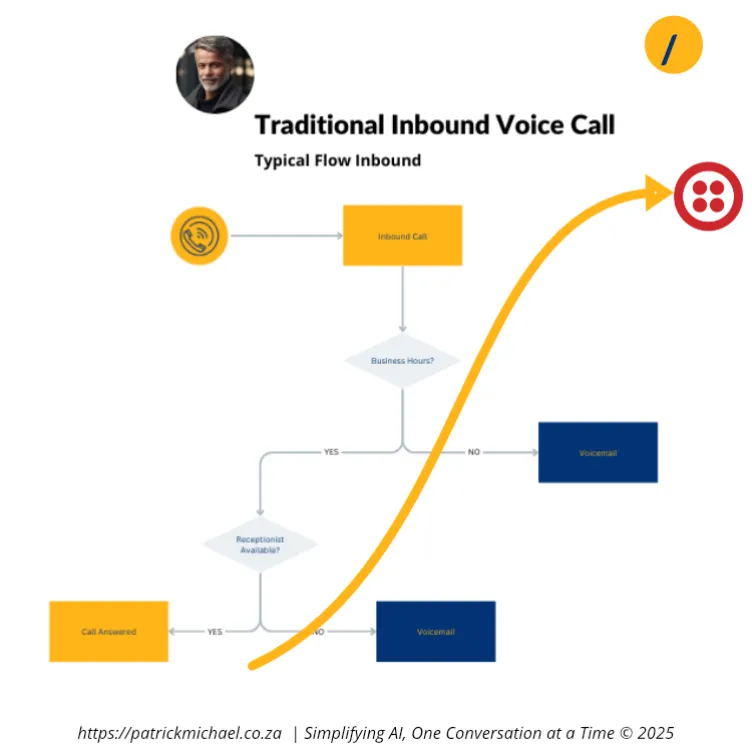
- A call comes in;
- If out of office hours, the call is directed to voicemail;
- If in office hours, answered by staff, if available;
- In not available, call is directed to voicemail.
Voice AI picks up the call - inbound call
Instead of going to voicemail, the call is routed to a Voice AI Agent (yellow line).
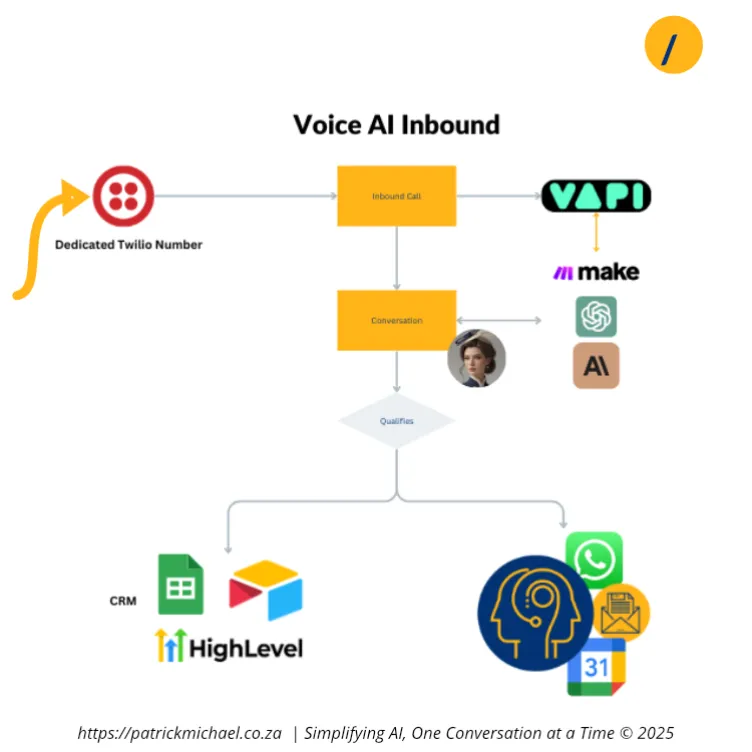
- Call is routed to a dedicated voice over IP (VOIP) number;
- Inbound agent answers the call;
- The agent has conversational 'rules' - basically a prompt designed specifically for voice conversational flows;
- The caller is qualified and based on that downstream actions are initiated;
- CRM updated;
- Messages sent;
- Appointments booked, e.t.c.
- The whole process is automated.
Outbound call flow
External events trigger outbound calls. This could be a dormant contact list revival process. An automated process iterates through the contact list, triggering the Outbound Voice Agent to call the prospect.
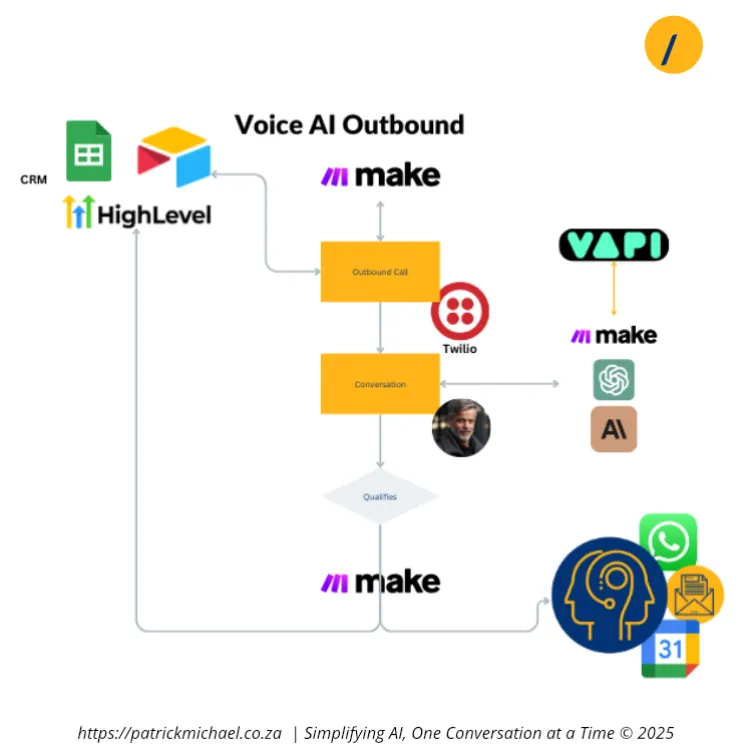
- The call flow is similar to the outbound process, except that it is triggered by an external process.
What are the Components and Component Costs of Voice AI?
Here are typical components that are needed for a Voice AI Agent. Typical associated costs are shown.
Voice AI platforms
They are specifically designed for developers to create, test, and deploy voice AI applications efficiently. I will mention three:
| Platform | Usage Costs | Comment |
|---|---|---|
Image

Vapi.ai (affiliate link: please support me) | $0.20/min | Pay-as-you-go Pay upfront |
Image
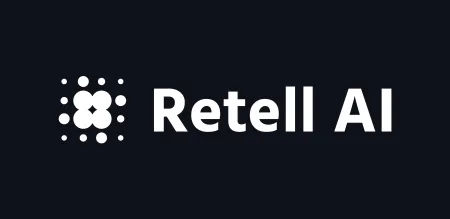
Retell.ai (affiliate link: please support me) | $0.20/min | Pay-as-you-go Billed in arrears |
Image

Elevenlabs.io (affiliate link: please support me) | $0.20/min Perhaps less | Subscription |
What is concurrency in Voice AI?
Concurrency is the number of simultaneous calls that can be handled by the platform. This is important for businesses that expect a high volume of calls.
VAPI:
- 10 concurrent calls per account. This includes inbound and outbound.
- Additional at $10 per month per slot.
Retell:
- 20 concurrent calls per account. This includes inbound and outbound.
- Additional at $8 per month per slot.
Do you require extra lines?
You will need extra lines if the number of calls you expect to make exceed your account capacity. This formula will help you determine when to get extra lines. Formula credit: Jannis Moore.

- N = Total number of calls per day
- C = Concurrency limit
- H = Number of operating hours
- t = Average call duration (% of hr)
Example
If you expect the agent to work 9hrs per day, with an average call of 5 minutes and a concurrency limit of 10.

How do Knowledge Bases Work in Voice AI?
In our context, a knowledge base is a central store of information that enables the agent to provide accurate, contextually relevant, and timely responses to user queries.
It acts as the 'brain' of the agent. For example:
- Lead qualifying questions;
- FAQs;
- Product details;
- Trouble shooting guides;
- Customer interactions and history
Costs relate to the extent of the knowledge base. For small projects, this is not a real factor.
Choosing a Telephone Number for Your Voice AI Agent
Each AI voice agent requires its own dedicated Voice over IP (VoIP) number. Popular providers include Twilio and Vonage, though I am most familiar with Twilio.
Costs vary based on the type of number (mobile or fixed) and the features enabled (SMS, messaging, fax, etc.). In South Africa, a mobile number is recommended, especially since WhatsApp messaging is commonly used.
Estimated Costs in South Africa: $0.17 - $0.89 per minute
Using a Custom Voice for Your AI Agent
You can personalize your AI agent with a custom voice. Platforms like Eleven Labs offer high-quality voice cloning, even allowing you to replicate your own voice.
However, using a custom voice may come with additional costs. Most Voice AI platforms provide a selection of built-in voices at no extra charge. If you choose a custom voice, it is linked externally, adding another cost layer.
We recommend introducing a custom voice only after your AI agent is established and generating a healthy return on investment (ROI).
What Automation Platform should I use for Voice AI?
Two commonly used automation platforms used in the voice AI development community are Make and n8n. I use Make.
I initially explored Zapier, however Zapier does not have a feature crucial to voice. That is webhook response. I went into this in some detail and without webhook response, development is significantly more complicated.
| Platform | Monthly Costs | Comment |
|---|---|---|
Image

Make.com (affiliate link: please support me) | $10.59 - $34.12 | Subscription Based on operations per month and features. |
Image

| €20 - €50 | Subscription Based on operations per month and features. |
Why choosing the right voice matters
The voice of your AI agent is a crucial element in creating a positive user experience. This is more than just a technical decision - it is a strategic one.
The voice of your AI agent serves as the auditory representation of your brand, directly influencing user engagement, trust, and overall experience.
- First Impressions Matter: The voice you choose is the first thing people hear - it sets the tone for your brand. Whether you want to sound trustworthy, professional, or friendly, the right voice makes all the difference.
- Making Real Connections: A natural, expressive voice creates a more human-like interaction, helping users feel comfortable and engaged. Studies show that voices with a warm or neutral tone build trust and keep people coming back (Pias et al., 2024). The more relatable the voice, the stronger the connection.
- Consistency Builds Recognition: Sticking to the same voice across different platforms helps people instantly recognize your brand. It creates a seamless experience, whether they're hearing you on a website, an app, or a smart device.
- Speaking to Everyone: A great voice should resonate with your entire audience. That means considering different languages, accents, and even age groups. In a diverse country like South Africa, offering voice options that reflect your audience isn't just a nice touch—it's essential.
Why Eleven Labs?
For AI-generated voices that actually sound human, Eleven Labs is my first (currently only) choice. In terms of their technology, they are getting it right, and it's easy to use. Here's why I use Eleven Labs:
- Realistic Voices: I have found Eleven Labs voices to be the most natural and realistic sounding. They handle emotion pretty well.
- Your Own Custom Voice: Need a unique voice for your brand? You can clone an existing one or create something completely original. Few platforms do this as well as Eleven Labs.
- Speaks Your Language (Literally): With support for 32 languages and 50+ accents, you can reach a global audience—or just make sure your brand speaks in a voice your customers relate to.
- Easy to Set Up & Use: I find the interface simple and intuitive. I have not played with the API yet, and am looking forward to doing so.
- Works Across Industries: While this article has the context of Voice AI assistants, it is worth noting that Eleven Labs caters to other applications. From audiobooks to e-learning, virtual assistants to gaming, Eleven Labs has an appropriate solution.
Conclusion
Voice AI is no longer a futuristic concept—it's a practical tool that businesses across industries are already leveraging to enhance customer experiences, improve efficiency, and drive growth. With advancements in AI-driven speech recognition, NLP, and automation, Voice AI is becoming smarter, more affordable, and easier to integrate into business processes.
For business owners, the key takeaway is this: adopting Voice AI now can provide a competitive edge, helping you scale customer interactions while reducing operational costs. The future of business communication is conversational, and Voice AI is leading the way.
TL;DR
Voice AI enables automated, human-like voice interactions for businesses, streamlining customer support, lead generation, and appointment scheduling. This guide explains what Voice AI is, where it’s used, how it works, and its costs - helping business owners make informed adoption decisions.
Article Resources
Links and downloads:
- TODO
Subscribe
Explore the practical possibilities of AI for your business. Subscribe to our newsletter for insights and discussions on potential AI strategies and how they are adopted.
Contact Me
I can help you with your:
- Voice AI Assistants;
- Voice AI Automation;
I am available for remote freelance work. Please contact me.
References
This article is made possible due to the following excellent resources:
Recent Articles
The following articles are of interest:
Add new comment